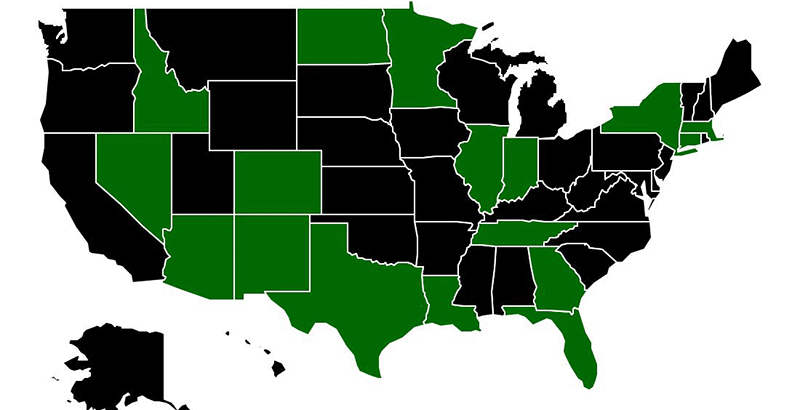Porter & Cowen: A New Review Examines 17 States’ Efforts in Boosting Struggling Schools. So What Do (and Don’t) We Know About the Dozens of Other Missing School Improvement Plans?

More than 9 million children attend our country’s lowest-performing schools, the vast majority of them students of color. While we are familiar with the components of successful schools — attributes such as high expectations for all students, strong leadership, highly capable teachers, excellent curriculum, regular use of data, a safe learning environment, and attention to students’ social and emotional needs — knowing these components and using that knowledge to help struggling schools is one of the most intractable and pressing challenges in education.
Beginning this school year, the Every Student Succeeds Act gives states more flexibility — and more responsibility — to tackle the challenge of how to best help the lowest-performing schools and provide a more equitable education to their students. As they do so, it’s important that states move forward with purpose, taking stock of, and putting in place, practices that are evidence-based and most promising.
The Collaborative for Student Success and HCM Strategists recently brought together an independent group of experts to examine 17 states’ approaches to this school improvement endeavor, using materials states have made publicly available to districts, as well as data collected by Education First from surveys and interviews with state education leaders. All these materials can be found on a map on The 74’s website.
When you look at The 74’s map, you’ll find a lot of helpful information about those 17 states all in one place. But you’ll also see … well, a lot of gray.
Only 17 states were included in the peer review, because at the time the review took place in September, HCM and the collaborative determined there was not enough publicly available material to fairly and accurately review the other states.
But that doesn’t mean nothing is going on in the states left gray on the map. Education First invited all 50 states and Washington, D.C., to share information about their progress so far and created snapshots of 41 state education agencies, providing a broader picture of what states across the country are wrestling with and the progress they have made thus far:
States are trying to move away from a one-size-fits-all approach to one that more systematically uncovers the unique, pressing issues and needs in each struggling school.
States are helping districts and schools take deeper looks into how and why schools are underperforming, and matching them with supports that will have the best chance of success. Education First was encouraged that many of the 34 states that didn’t make the HCM/collaborative review are working to better prioritize which changes to make first and which strategies are most likely to succeed. To that end, most reported they are thoughtfully modifying the tools they use to help districts and schools identify the root causes of low performance and the specific areas and student populations that need to be addressed.
Moreover, some states are thinking beyond the creation of the tools themselves and focusing on their use. For example, a handful of states — among them Maryland and Mississippi, which were not included in the collaborative/HCM review — reported that they are training school leaders specifically on key skills for conducting needs assessments, including analyzing root causes. Meanwhile, Oregon has developed a new protocol for listening to and engaging diverse community perspectives on school needs as a first step in the needs-assessment process.
States are taking the federal requirement to use “evidence-based” practices and strategies in their school improvement approaches seriously.
So far, most states say they are moving to create a new clearinghouse of evidence-based school improvement practices in order to better line up school needs with proven strategies that can make a difference. Nine states have already rolled out this new tool, and 18 others report they are in the process of doing so; in both cases, these states include a mix of those reviewed by the collaborative/HCM in September and those that haven’t been reviewed yet. Virginia, for example, has shifted to a “case management” support model in which state education agency staff build relationships and support a portfolio of schools.
Many states still need to finalize their process for monitoring schools targeted for improvement.
Only 10 states have revised their monitoring protocols and tools so far, including four states not part of the review. One of those four is Kentucky, which is paying attention to schools’ short-term goals — it asks schools to set goals in just three areas and monitors progress every month with on-site visits. Most are tackling the challenge of ongoing monitoring this school year and hope they can look to some exemplary approaches already in place elsewhere.
The fact that 34 states didn’t make the cut for this first round of deeper review doesn’t mean they’re not moving forward on their efforts to turn around their struggling schools.
However, information on their progress so far leaves some unanswered questions. Will these 34 states — and the 17 included in HCM/collaborative peer review — truly rise to the challenge of making evidence-based efforts to improve their schools? Will they offer meaningful supports to all schools that need help? Will they take equity considerations seriously in making decisions?
As states get started, definitive answers to these questions remain a gray area, for now.
William Porter is a partner at Education First. Jim Cowen is executive director of the Collaborative for Student Success.
Get stories like these delivered straight to your inbox. Sign up for The 74 Newsletter

;)
